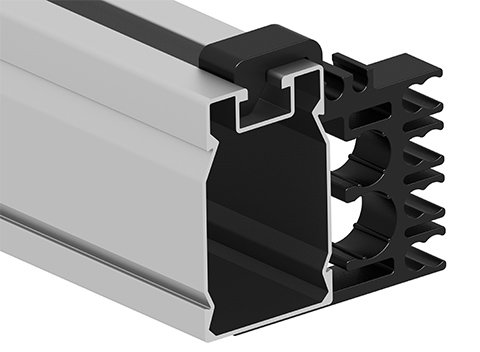Originally Posted In: Solar Builder Magazine – https://solarbuildermag.com/
Authored By: Chris Crowell
Lots of structural components influence the long-term stability of a rooftop solar racking system. On this episode of The Pitch, we zoom in on SunModo’s approach to rooftop rail-based mounting and wire management, specifically its SMR system, and cover some recent system updates, with newly appointed CEO Steve Mumma.
Crowell: Wire management can often be an annoying part of the job, to get done right at least. … What are some issues that you hear from installers when it comes to wire management?
Mumma: Historically, for residential racking, there haven’t been great solutions for wire management. The market’s been hungry for it. A lot of people just do zip ties or something like that, and there’s been racking companies that have the open channel in the rail for wire management. There’s somewhat of a trend with some racking companies moving that direction, but there’s a lot of drawbacks from that.
As soon as you have that open channel, it makes the rail weaker. … From a code standpoint, you are not allowed to have MC4 connectors inside an open channel, so technically you need to have them pulled out, but that’s a detail that’s difficult for installers to get to. And if you don’t pull them out, you get some water in there and you get shorts. Also with the open channels, if you have to go back and service a system, all of your wires are trapped underneath the modules.
We’re taking advantage of the ability of our SMR rail system to have features that allow us to just snap things on, and we have a small plastic wire management clip that just snaps onto the top of the rail. It’s easy on, easy off, and then included in that clip are a wide variety of different size openings so that it could accommodate home run, trunk cable, Enphase wires, PV wire, even a place to put a ground wire on there if you need it. The beauty is that it’s fast and easy because it’s just a simple snap onto the rail but then all the wires are just nicely contained right there in the side of the rail, and they’re gripped so it’s not like with a zip tie where yes you’re holding the wire but you’re not really grabbing it, so you can still have droops which causes you to fail inspections.
Crowell: Staying on the SMR rooftop system, that has been a pretty successful system for you since you debuted it. What are some other aspects that have led to it resonating with your customers?
Mumma: It kind of all gets back to the rail. The rail is the foundational part of rail-based racking system. It is the most expensive part and then everything one way or another attaches to the rail, so it all comes back to the rail.
Everything snaps onto the SMR rail, so that it’s secure but it’s also fast for the installer. The other place we were able to optimize is from a design standpoint, we were able to have the rail that is the lightest weight rail by a substantial amount on the market, but it’s also the strongest rail by a substantial amount on the market. SMR rail is also able to be used up to 90 psf snow with one rail that’s lighter than everybody else’s, but can be basically used anywhere in the country.


